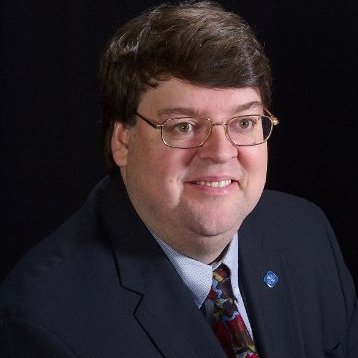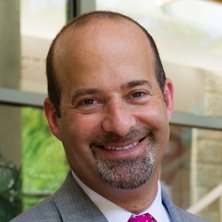Why the Touchstone Project is so important to HL7 FHIR
As the January 2016 HL7 Workgroup meeting takes place in Orlando, Florida, all eyes are on on the key theme of the meeting, which is interoperability and the latest advancements to FHIR. Two months ago AEGIS.net, Inc. (AEGIS) announced the launch of its of Touchstone Project – a next generation cloud-based testing platform for FHIR. This technology has great promise so we asked Mario Hyland and Barry Dickman from AEGIS to elaborate the story for our readers. Below is the first article on the subject. Roger A. Maduro, Publisher and Editor-in-Chief, Open Health News.
 Mario HylandA number of significant factors have led to both real and perceived challenges in health information exchange interoperability. What has become clear is that a standards-based approach to information exchange ensures interoperability – at least from the perspective of technology. Other factors such as organizational culture also impact interoperability – we are not going to address that here. Instead we want to talk about the current successful trajectory of interoperability from the technology standpoint.
Mario HylandA number of significant factors have led to both real and perceived challenges in health information exchange interoperability. What has become clear is that a standards-based approach to information exchange ensures interoperability – at least from the perspective of technology. Other factors such as organizational culture also impact interoperability – we are not going to address that here. Instead we want to talk about the current successful trajectory of interoperability from the technology standpoint.
The key to making interoperability succeed whether with health data or any other kind of data exchange is through partnering systems speaking the same language. Just as two people communicate through a commonly shared language, health information systems do so via standards. The leading health care standards-defining organization today is Health Level Seven International (HL7). The HL7 standards for clinical and administrative information exchange have been progressively adopted by the health care industry since the organization was founded in 1987.
The most exciting development to date by HL7 is the Fast Healthcare Interoperability Resources (FHIR®) specification, which is currently a draft standard rapidly working its way toward becoming a “working standard”. Despite its current draft status, FHIR is already being implemented by leading health IT organizations worldwide. The benefit of FHIR compared to other standards is that it is designed specifically for easy integration with modern software technologies and Agile software development methods. As such, it has the potential to dramatically accelerate health information exchange interoperability throughout the industry. The high level of interest and participation around key initiatives such as this week’s HL7 Working Group Meeting and FHIR Connectathon in Orlando, Florida is evidence of the seismic shift toward feasible, continuous interoperability that FHIR promises.
The AEGIS Touchstone Test Platform, launched at the most recent HL7 FHIR Connectathon in Atlanta, Georgia in October 2015, provides the means to help guide FHIR implementations toward a high degree of conformance and interoperability within a continuous testing and integration model. As stated by HL7 CEO Charles Jaffe, MD, PhD, “A successful testing program also provides FHIR development teams at HL7 with the essential infrastructure that is critical for all of our stakeholders."
The Challenge
Today nearly 90 percent of all the testing being conducted within healthcare industry relates to “Happy Path” testing. Such testing applies to test cases and test data that simulate perfect or ideal conditions and less on real-world conditions where frequently conditions are other than ideal. AEGIS’ approach with all of our testing platforms is to address Happy Path but also place significant importance on “Negative Testing” — that is, testing that accounts for non-ideal conditions such as those that occur in real-life production situations. We feel this kind of testing is critical for ensuring these systems are working correctly when they matter most, particularly when patient safety is at stake.
In addition, many of the testing events held across the healthcare vendor and implementation community focus on testing current (newer or latest) versions of the standards and specifications being implemented, rather than continuing to demonstrate that implementations will work with previous versions (backwards compatibility) or current implementations being used across health care organizations.
In other words, they fail to consider “future-proofing,” where a vendor ensures that previous versions of the software (such as an EHR) remain interoperable as newer versions of software are being deployed by the industry. The Office of the National Coordinator for Health IT, many Federal initiatives, and certification bodies do not take these conditions into consideration as they offer to certify vendor EHR systems. That is, they certify interoperability at a point in time, but stay silent on whether the system remains interoperable over time under changing environments. AEGIS’ overall approach to continuous testing accounts for both scenarios, specifically supporting testing compatibility forward and backward on the standards version continuum.
Solving the challenge through Natural Language Processing
One of the key advancements of the AEGIS Touchstone Project is the implementation and functionality of the FHIR Test Script Resource. Touchstone has incorporated an AEGIS designed and built Natural Language Processing (NLP) engine. By coupling AEGIS’ new NLP engine from Touchstone with the existing DIL Dynamic Rules-based engine, Touchstone supports a new level of sophistication and complexity within test cases and workflow (such as Care Coordination) based scenarios.
What does the FHIR Test Script Resource deliver? Previously, only testing tool developers were able to contribute and advance healthcare related testing; with this new FHIR resource, Touchstone is able to utilize test cases written by business users in a format closer to natural language than computer code. This will provide the ability to Crowd Source future FHIR Test Script development, while providing HL7 Workgroups, Subject Matter Experts and Healthcare Organizations an ability to actively participate in the designing and constructing of new testing approaches. In fact, this activity is playing out today as the HL7 FHIR Management Group (FMG) prepares the next HL7 FHIR Connectathon Testing Tracks.
What is in the future for Touchstone? On January 6, 2016 AEGIS announced the launch of Touchstone 2.0 – which included many new features, such as Argonaut Test Support for FHIR Clients and externally supported testing variables supplied at runtime, basic Open Authorization (OAuth2) token support, with advanced support for dynamic Open Authorization (OAuth2) to follow shortly. This allows for advanced multi-organization workflow-type testing (necessary when testing patient care coordination).
“Solving” interoperability, at least from technology’s perspective, remains all about standards. FHIR represents a next generation health information exchange standard, one designed specifically for modern, Agile software development. Touchstone provides the continuous testing platform and ecosystem that helps the implementers of FHIR quickly verify and validate their successful path to FHIR-based interoperability.
* HL7® and FHIR® are registered trademarks of Health Level Seven International.
- Tags:
- AEGIS.net
- Agile software development methods
- backwards compatibility
- Barry Dickman
- care coordination
- Charles Jaffe
- continuous interoperability
- crowdsourcing future FHIR Test Script development
- DIL Dynamic Rules-based engine
- Fast Healthcare Interoperability Resources (FHIR)
- FHIR Connectathon
- FHIR Test Script Resource
- Happy Path testing
- health care industry
- health information exchange interoperability
- Health IT
- Health Level Seven International (HL7)
- HL7 FHIR Connectathon
- HL7 FHIR Management Group (FMG)
- HL7 Working Group Meeting
- Mario Hyland
- natural language processing (NLP)
- Negative Testing
- Office of the National Coordinator for Health IT (ONC)
- standards-based approach
- Test-Driven Development (TDD)
- Touchstone 2.0
- Touchstone Test Platform (Touchstone)
- Touchtone Project
- working standard
- Login to post comments
